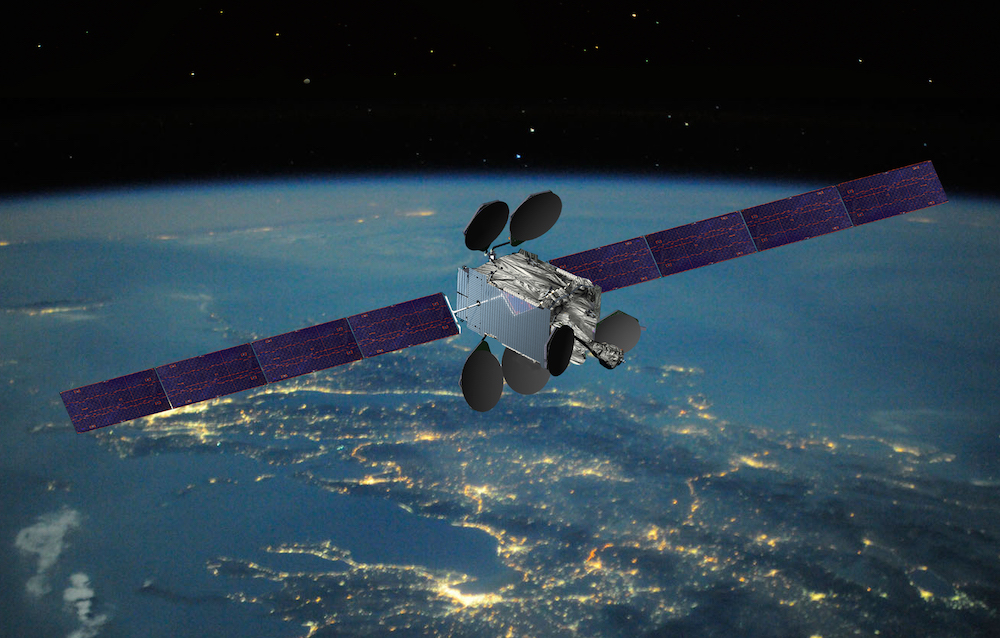Evermore connected
How will the next generation of satellites evolve to meet the superyacht market's connectivity demands?
It is no secret that connectivity is becoming an increasingly important part of the superyacht experience. Indeed, connectivity is becoming an increasingly important part of most experiences today. One needs only to consider the number of devices that the average person uses, be it a mobile phone, tablet, laptop, virtual assistant or other, to appreciate the extent to which we are connected. Whether someone is at home or work, on holiday or on board a superyacht, connectivity is assumed. SuperyachtNews speaks with Mark Rasmussen, senior vice president of global sales and distribution at Intelsat, about the future of connectivity on board superyachts.
“Connectivity in the superyacht sector is already changing very fast,” starts Rasmussen. “The demand for connectivity and throughput on superyachts is increasing dramatically every year and it is one that our FlexMaritime network is perfectly positioned to serve. However, we feel as though we are just getting started and what we will be able to deliver to this segment in the years ahead will be astounding.”
FlexMaritime provides a high-speed, flexible service that delivers consistent and reliable performance to the superyacht market. It was announced in 2019 that Intelsat’s FlexMaritime service will power KVH’s Elite system, an unlimited VSAT streaming service for HD quality video to superyachts. The new service is now available in Florida and the Caribbean and is due to be rolled out in the Mediterranean this year.
“The need for connectivity is being driven by the number of devices that everyone is carrying and how they use them. Almost all people carry at least one device, with many carrying two or three. Streaming video has chiefly been the cause for the large increases in bandwidth requirement. Crew welfare is also an important factor. Crew want to remain connected to their friends and family and, therefore, come with their own data demands. In addition, various applications and systems for the operation of the vessel itself require increasingly large data packages. When combined, all of these things have led to the increase in demand and value of connectivity, and there is no doubt that this trend will continue in the future.”
Traditionally, one of the major concerns about connectivity and throughput has been the belief that increasing capacity requires dramatic increases in cost and, for the most part, these concerns have been perfectly valid. Indeed, it is not uncommon for superyachts to pay over £100,000 a year on connectivity.
“The next generation of satellites will see even greater increases in uptake ability with flexible satellites that can dynamically allocate capacity and throughput to different coverage regions,” continues Rasmussen. “Therefore, as the traffic moves or shifts then the capacity of the satellite can be dynamically allocated to where the vessels actually are, rather than having a satellite up there focussed on a coverage area with no vessels. Those days will be gone and we will be able to move capacity around the earth depending on demand.”
 Mark Rasmussen, senior vice president of global sales and distribution at Intelsat
Mark Rasmussen, senior vice president of global sales and distribution at Intelsat
Through the new satellites that are able to dynamically reposition capacity, Rasmussen believes that they will be able to begin reducing the relative cost of throughput by making the allocation of resources far more efficient.
“In fact, if you track the cost of throughput at sea over the last five to 10 years you will see that is has dramatically come down in price when measured against VSAT output for services like FlexMaritime,” says Rasmussen. “This trend is due to continue. The one thing that kills cost efficiency more than anything else for a satellite network is unutilised capacity. Capacity on a satellite equals power and when the power from the satellite isn’t being used you have economic inefficiencies. If you can direct the power and capacity to where it is needed, and it is no longer sitting there idle, you now garner even greater efficiencies on a full economic basis and that helps bring down the cost of throughput to mobility users like yachting. This is really the driver for what we are trying to achieve in space and on the ground with the next generation of our Epic satellites.”
Booming demand for connectivity, especially in light of the rise in popularity of streaming services, has given the satellite and communications business the impetus to adapt rapidly in order to meet demand. Indeed, according to Rasmussen, it is a brilliant problem to have. “We have a large and growing demand for what we do and we have our best minds on creating every more efficient and cost-effective connectivity services. The more we can do that, the more the market will grow,” concludes Rasmussen.
In 2019, Inmarsat, the mobile satellite company, launched the Inmarsat Superyacht Connectivity Report 2019. The report, compiled by The Superyacht Agency, examines the use of satcomms on board superyacht and reveals the future requirements of the superyacht market for global connectivity solutions. Click here to download the report.
Profile links
NEW: Sign up for SuperyachtNewsweek!
Get the latest weekly news, in-depth reports, intelligence, and strategic insights, delivered directly from The Superyacht Group's editors and market analysts.
Stay at the forefront of the superyacht industry with SuperyachtNewsweek
Click here to become part of The Superyacht Group community, and join us in our mission to make this industry accessible to all, and prosperous for the long-term. We are offering access to the superyacht industry’s most comprehensive and longstanding archive of business-critical information, as well as a comprehensive, real-time superyacht fleet database, for just £10 per month, because we are One Industry with One Mission. Sign up here.
NEW: Sign up for
SuperyachtNewsweek!
Get the latest weekly news, in-depth reports, intelligence, and strategic insights, delivered directly from The Superyacht Group's editors and market analysts.
Stay at the forefront of the superyacht industry with SuperyachtNewsweek




